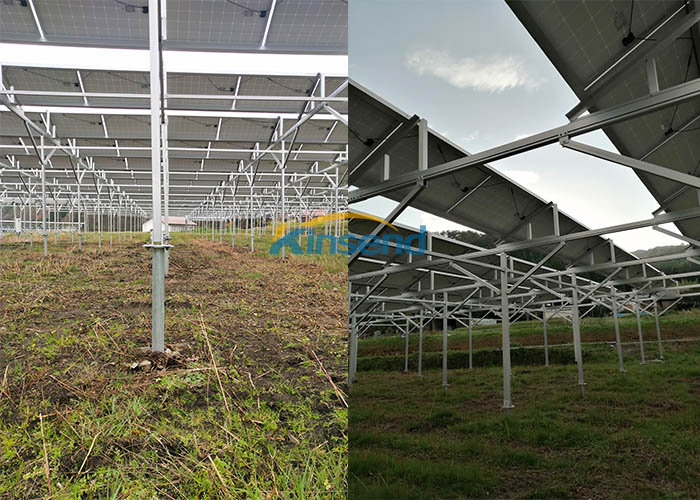The hot summer is coming soon. Combining the two systems of solar panel (photovoltaic) infrastructure and agriculture can create a mutually beneficial relationship. This method can realize two-way utilization by planting crops in the shadow of solar panels.
In an integrated farm solar power systems, the environment under the solar panel is much cooler in summer and can remain warm in winter. This not only reduces the evaporation rate of irrigation water in summer, but also means that plants will not be under so much pressure. Crops that grow under lower drought stress need less water. Because they are not easy to wither due to high temperature at noon, they can carry out photosynthesis for a longer time and grow more effectively.
In the strong light environment, the leaves of plants tend to be smaller, which is to adapt to the strong sunlight and inhibit the solar panel supports systems. In low light conditions, plants grow larger leaves to disperse the chlorophyll that absorbs sunlight, turning more light into energy.

Solar panels themselves benefit from this collaborative environment. When the sun is sunny and the temperature is too high, solar panels begin to perform poorly because they become too hot. The water evaporated from crops will produce local cooling effect, so as to reduce the thermal stress of overhead solar panels and improve the performance of solar panels.
Japan has announced that the CO2 emission reduction target will be negative 46% in 2030 compared with 2013, and zero net emissions will be achieved in 2050. In Japan's total agricultural land area of 4.6 million hectares, if 3 million hectares are used for solar energy sharing, it can cover all Japan's electricity consumption throughout the year. This is a space that can be fully utilized for agricultural sheds in Japan, which is relatively short of land.
Compared with open-air planting, first, the photovoltaic greenhouse solves the impact of adverse weather such as typhoon, rainstorm and high temperature, and provides a more stable planting environment for leafy vegetables. Second, the slope of the photovoltaic power generation project has good drainage and avoids the risk of flooding; Compared with the traditional greenhouse planting, the transformation cost of photovoltaic greenhouse is lower and the wind resistance is stronger,
Kinsend Solar has successively completed many agricultural shed projects. We use adjustable ground screw to enable customers to achieve high customer adjustability according to field requirements Let the agricultural shed be adjusted according to the different needs of the site and light. We look forward to your inquiry. If you also look forward to Installing Photovoltaic System on your farm shed.
Hot Sale Solar Mounting Solutions recommend for you